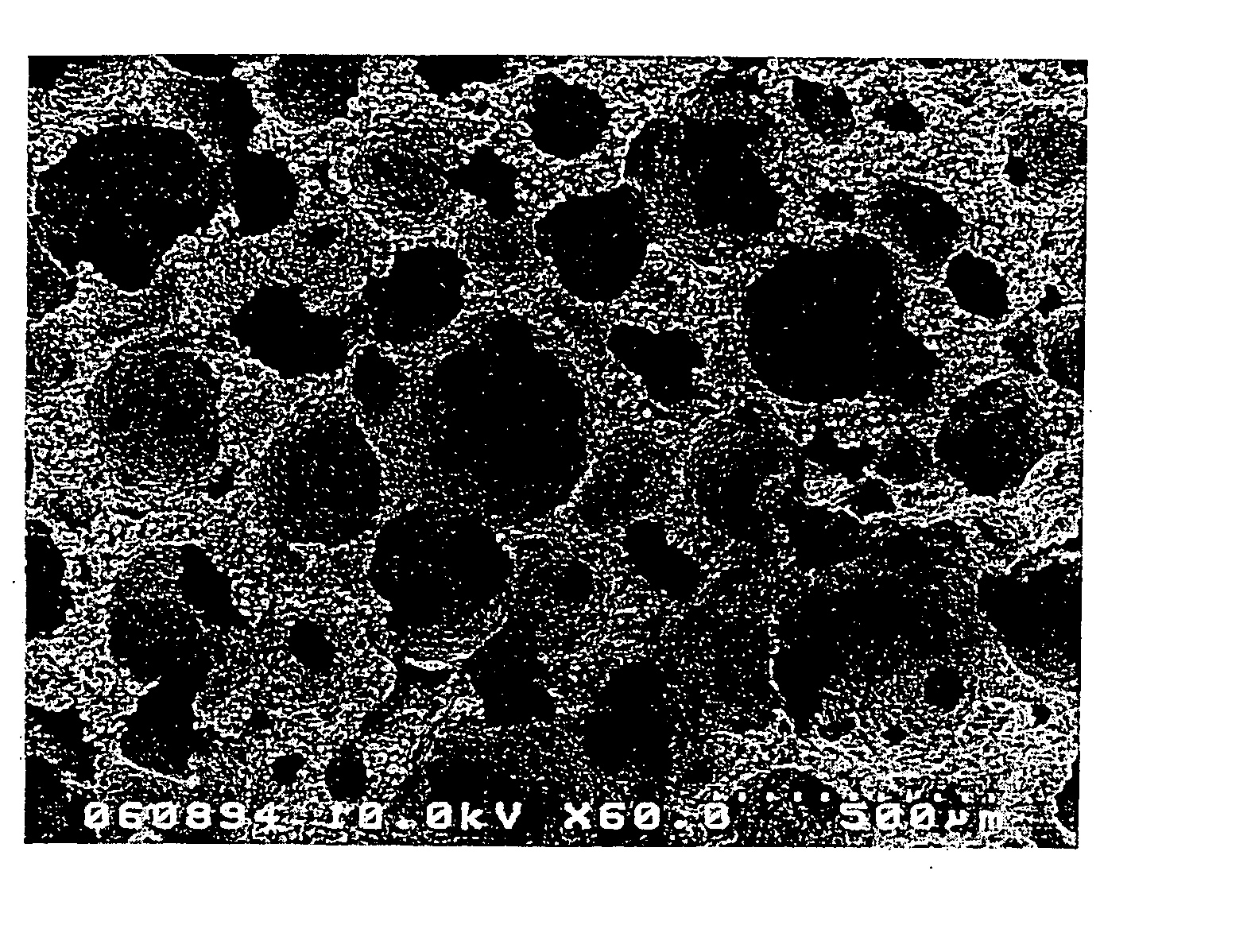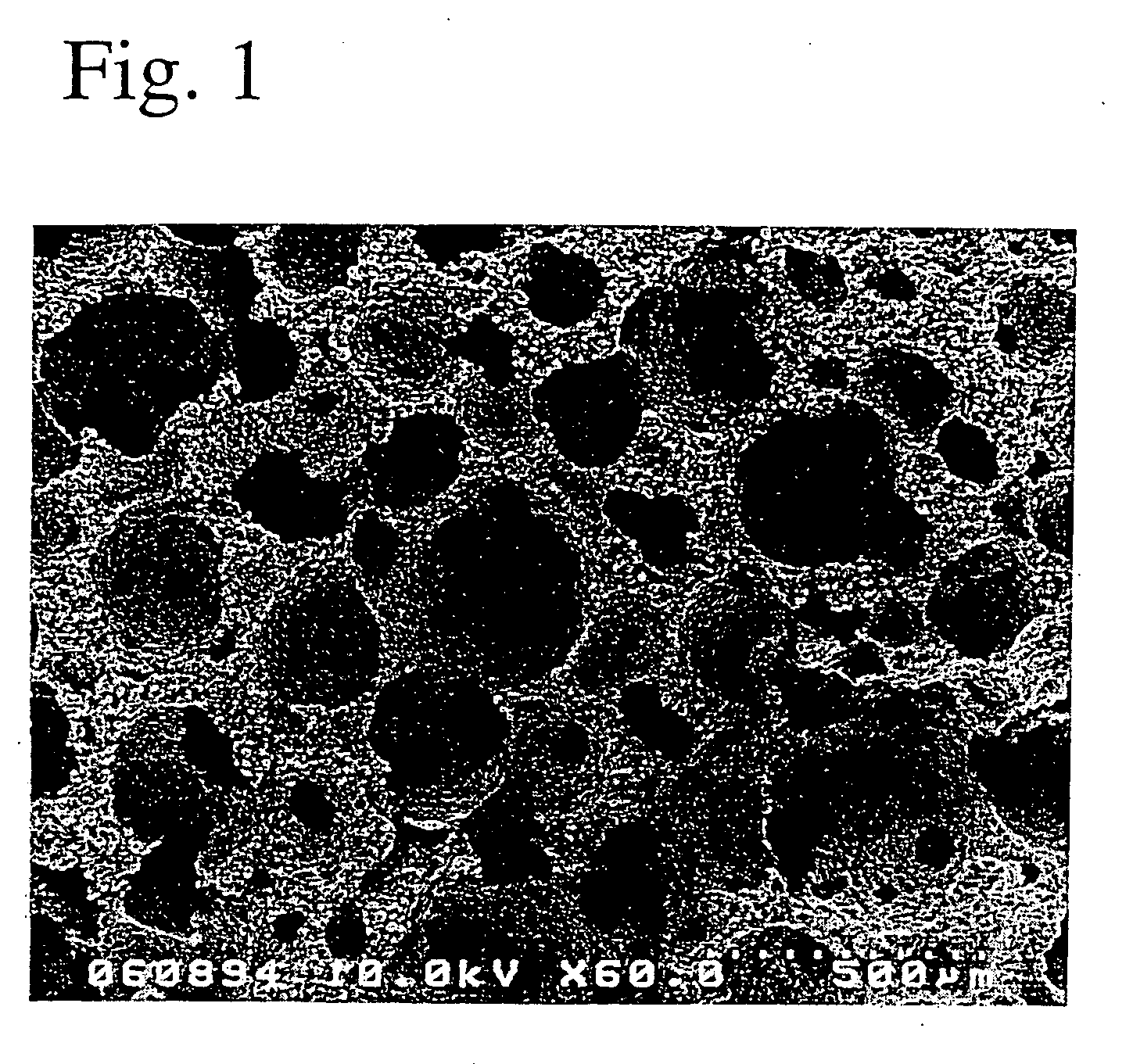Porous sintered body of calcium phosphate-based ceramic and method for producing same
a technology of calcium phosphate-based ceramics and sintered bodies, which is applied in the field of porous sintered bodies of calcium phosphate-based ceramics and methods for producing same, can solve the problems of pyrolytic resin, limited porosity, and difficulty in regularly controlling the average pore diameter and porosity, and achieves high strength
- Summary
- Abstract
- Description
- Claims
- Application Information
AI Technical Summary
Benefits of technology
Problems solved by technology
Method used
Image
Examples
example 1
[0051] 120 parts by weight of spherical hydroxyapatite powder having an average diameter of 10 .mu.m, which is composed of long thin primary particles having an average particle diameter of 78 nm in the major axis and 23 nm in the minor axis; 320 parts by weight of an aqueous solution containing 1 weight % of methylcellulose manufactured by Wako Pure Chemical Industries, Ltd., an aqueous solution containing 2 weight % of the methylcellulose exhibiting a viscosity of 4000 cps at 20.degree. C.; and 10 parts by weight (solid content) of N, N-dimethyldodecylamine oxide "AROMOX" manufactured by LION CORPORATION used as a fatty acid alkanolamide surface active agent were mixed to prepare a slurry. The slurry was put into a homogenizer "PA92" manufactured by SMT Co., Ltd. Then, the slurry was vigorously stirred for 5 minutes under a stirring condition of 60 W / L (actual output in the stirring process) while maintaining the temperature of the slurry at 8.degree. C. to froth the slurry.
[0052]...
example 2
[0055] A porous sintered hydroxyapatite body according to Example 2 was produced in the same manner as Example 1 except that the slurry was vigorously stirred while passing nitrogen gas therethrough from a pipe disposed on bottom of the homogenizer to froth the slurry. Porosity of the resulting porous sintered hydroxyapatite body was measured. The result was shown in Table 1 with a composition of raw materials in the slurry.
examples 3 and 4
[0058] Porous sintered hydroxyapatite bodies according to Examples 3 and 4 were produced in the same manner as Example 1 except that a homogenizer "HM10" manufactured by SMT Co., Ltd. was used instead of the homogenizer "PA92" and that a slurry having a composition shown in Table 2 was stirred under conditions shown in Table 2 to froth the slurry, respectively. Incidentally, "Actual Output of Stirring Apparatus" in Table 2 corresponded to the stirring condition. Further, porosity of each porous sintered hydroxyapatite bodies was measured. The results were shown in Table 2.
PUM
| Property | Measurement | Unit |
|---|---|---|
| porosity | aaaaa | aaaaa |
| particle diameter | aaaaa | aaaaa |
| particle diameter | aaaaa | aaaaa |
Abstract
Description
Claims
Application Information
 Login to View More
Login to View More - R&D
- Intellectual Property
- Life Sciences
- Materials
- Tech Scout
- Unparalleled Data Quality
- Higher Quality Content
- 60% Fewer Hallucinations
Browse by: Latest US Patents, China's latest patents, Technical Efficacy Thesaurus, Application Domain, Technology Topic, Popular Technical Reports.
© 2025 PatSnap. All rights reserved.Legal|Privacy policy|Modern Slavery Act Transparency Statement|Sitemap|About US| Contact US: help@patsnap.com


